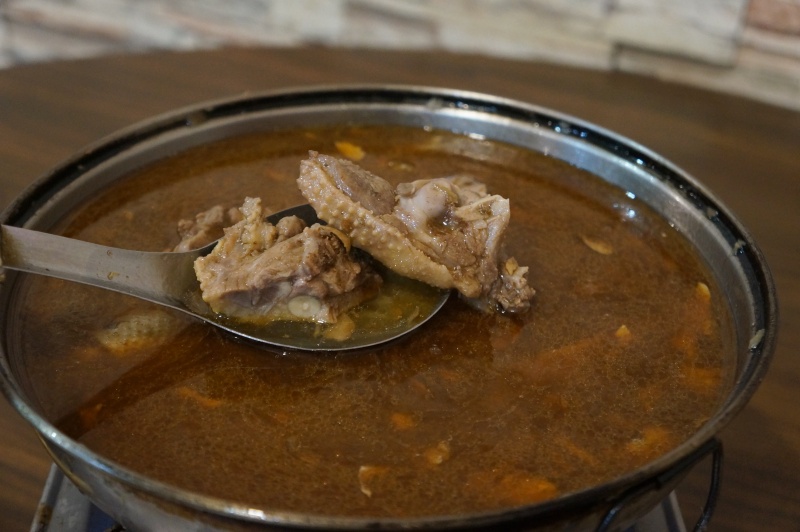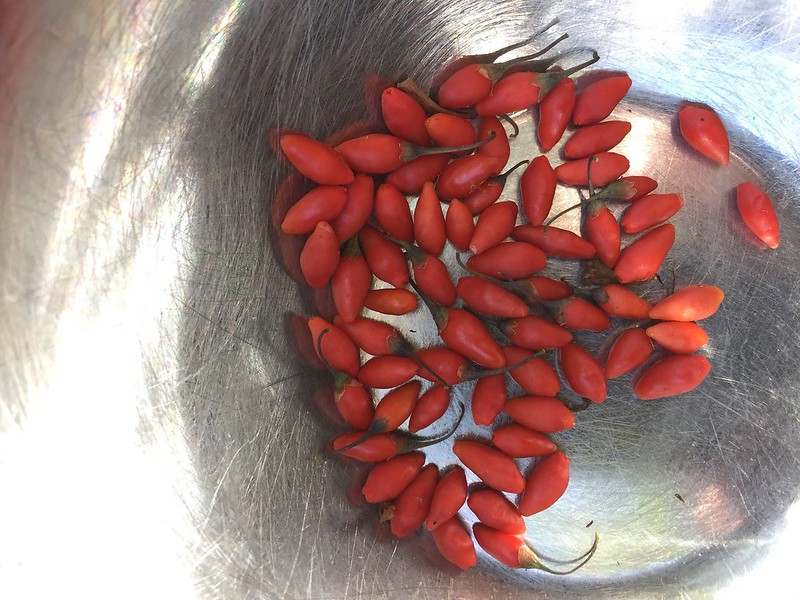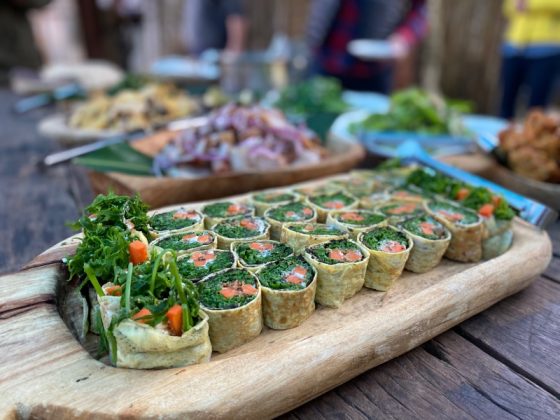If nothing else, Taiwan has a renowned food culture. For most people, that means street snacks like bubble tea, xiaolongbao, and the odd gratuitous fried chicken cutlet. Seasonal cooking, however, is less apparent. But when the mercury drops, people flock to any of the unpretentious roadside restaurants that specialize in one of the nation’s favorite winter staples. We’re talking of course about ginger duck (薑母鴨).
A decadent hotpot of duck, ginger, rice wine, and rich sesame oil, ginger duck is the perfect local antidote to Taipei’s damp (yet short-lived) winter weather. The dish is typically served in clay or earthenware pots and kept warm over a charcoal fire. Though duck is the only meat on most restaurant menus, you can choose between meatballs, breast, heart, liver, or even intestines. The flavor is generally rich but not spicy, with rousing notes from the ginger and rice wine.

In general, you’ll find there’s the usual selection of add-ons you can throw into the mix, including corn, tofu skins, and oyster mushrooms. Coat everything in salty doubanjiang 豆瓣醬 or semisweet dofu-ru 豆腐乳 for spectacular pops of flavor. But unlike regular hotpot, which is normally eaten with white rice, ginger duck arrives next to heaped places of sesame rice noodles (麻油麵線) one plate of which is usually enough for two diners.
Origins
Given its rich reddish-brown color, you’d be forgiven for thinking that ginger duck originated in Beijing or Sichuan. But many trace the dish’s history back to the southern Chinese city of Quanzhou. Locally known there as salted duck (鹽鴨), the Quanzhou version differs from what is served in Taiwan. Instead of a hotpot, it’s a stew. Large cuts of duck are seasoned generously with salt and ginger and slow-cooked over a charcoal fire for two-to-three hours until the meat is so tender it falls away from the bone. Many neighboring cities, like Xiamen and Tong’an, have their own variations of the dish. Normally, these are prepared for take-out only or as a clay pot dish seasoned with some combination of sesame oil, rice wine, soy sauce, sugar, goji berries, and salt.

The ginger duck was only introduced to Taiwanese diners in 1981 by chef Tian Zheng-de (田正德), whose restaurant Diwang Shibu (帝王食補) was the first to serve the dish. According to Ryori Taiwan, it was Tian that altered the Chinese recipe, adding sesame oil, medicinal herbs, and rice wine. Thus giving the dish its current flavor. By 2003, an estimated 1,000 ginger duck restaurants had opened across Taiwan.
The Key Ingredients for the Best Ginger Duck
Despite the sheer number of independent duck shops in Taiwan, there’s some consensus on the core ingredients for perfecting this hearty dish. As in China, the recipe uses Muscovy duck, an American breed that reportedly has a superior flavor and darker meat. It also calls for old ginger specifically, “old” here referring to the age of the root at harvest (two years later than the usual harvest time), and not how long it has been left sitting on the shelf.

Sesame oil is crucial, giving ginger duck its consistency and soul-warming richness. Meanwhile, the rice wine sweetens the soup and balances out the flavor of the medicinal herbs. Recipes aren’t too specific about what kind of rice wine should be used. That being said, Tian reportedly always used Red Label (紅標米酒). And it’s bottles of the stuff that you’re likely to find on the shelf at most duck shops today. At some shops, you can order extra bottles of rice wine to liquor up your pot. Don’t pour it into your glass though. Leave the sake drinking until after dinner (Shochu anyone?).
Where to find Ginger Duck in Taipei
Finding the best ginger duck hotpot in Taipei is more a question of when you look rather than where you look. Most restaurants are hole-in-the-wall setups (which is never a bad thing) that only serve the dish during the colder months, normally from around November to March. When they are open, most are recognizable for the yellow lanterns printed with black ducks that are outside. If you miss those, you won’t miss the low circular tables and plastic stools that crowd the sidewalk in front. Because even in the dead of winter, ginger duck is an outdoor food.
Diwang Shibu (Huajiang) 帝王食補
Taiwan’s first ginger duck restaurant is still open and continues to draw in hungry diners with its notably tender meat. Try the duck meatballs (鴨丸), or if you’re feeling adventurous, the duck heart. Given its reputation, Diwang Shibu is often pretty busy. Don’t be surprised if you need to wait half an hour for your order.
Bawei Ginger Duck (Sanchong) 霸味薑母
Another Taipei favorite, Baiwei has several restaurants around Taiwan and opens daily. Sanchong is the original location, though, and arguably also the best. Open daily, it’s larger than most sets across three floors. Get seated on the first floor if you can, as it’s only that level to use charcoal fires. Given its excellent reputation, Bawei is often crowded. But if you don’t want to wait around, you can also order your hotpot to go.
A-Lan Zi (Xindian) 阿蘭子薑母鴨
Located near Qizhang Station, a few stops from Gongguan, A-Lan Zi stands out for its creative stock, which also contains sugarcane and wolfberry. The ginger is also shredded rather than cut, giving the hot pot a spicier heat than you might find in most other places. Enjoy with an order of either meatballs or blood curd (鴨血) — which if you can get over the name, is pretty fantastic.












